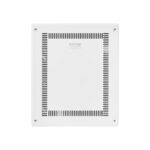When it comes to building your dream home, selecting the right floor plan is one of the most critical decisions you’ll make. Your home’s layout will influence how you experience daily life, accommodate family gatherings, and grow over time. It’s essential to choose a design that suits your current lifestyle while also considering future needs. Here’s a guide to help you make the best choice based on lifestyle, family size, and long-term growth.
Assess Your Lifestyle
Your lifestyle is a crucial factor when choosing a floor plan. Think about how you and your family spend time at home. Are you the type to host frequent gatherings or prefer quiet, cosy nights? Do you need a large open-plan living area, or is a more compartmentalised layout better for maintaining privacy?
- Entertaining Spaces: If you enjoy hosting, an open-plan layout with a large kitchen that flows into the living and dining areas can be ideal. Look for features like kitchen islands and outdoor entertaining areas to maximise the space.
- Private Spaces: For those who value quiet and privacy, a floor plan that separates living areas from bedrooms or includes a dedicated home office might be more suitable.
- Lifestyle-Specific Needs: Consider any additional spaces that could enhance your daily routine, such as a gym room, hobby area, or a home theatre. Choose a floor plan that can adapt to your specific needs and activities.

Consider Your Family Size and Future Growth
Your family’s size, and whether you plan to expand in the future, plays a major role in determining the right floor plan. For couples or small families, a compact, well-designed home might suit your current needs, but it’s essential to think ahead.
- Growing Families: If you anticipate your family growing, whether through children or accommodating elderly parents, it’s wise to plan for extra bedrooms and bathrooms. Multi-functional spaces like a guest room that can later serve as a nursery, or a second living room that can double as a play area, provide flexibility.
- Family-Friendly Design: For families with young children, an open-plan design can be beneficial to keep an eye on the little ones. However, as children grow, a home with separate living areas and larger bedrooms might offer the privacy they need.
- Downsizing: On the other hand, if you’re an empty nester looking to downsize, a smaller floor plan that reduces maintenance and focuses on fewer, larger rooms can be ideal.
Adaptability for Future Growth
Your floor plan should be flexible enough to accommodate changes that may arise in the future. Whether it’s growing your family, changing work-from-home dynamics, or adding value to your home, adaptability is key.
- Additional Rooms: Consider a layout that allows for expansion, such as adding another bedroom, converting a garage into a living space, or expanding your outdoor living areas. The possibility for future modifications adds long-term value to your home.
- Energy Efficiency and Sustainability: If you’re conscious about sustainability, look for designs that maximise natural light, include energy-efficient appliances, and offer good insulation. Many modern floor plans now incorporate eco-friendly features that reduce the cost of future utilities while making your home more comfortable.
- Multi-Purpose Spaces: Rooms that serve multiple purposes are a great option for future-proofing your home. For example, a home office that can later be used as a bedroom or a media room that doubles as a guest space. Multi-functional spaces give your home the flexibility to grow and change with your lifestyle.

Explore Different Layouts
There’s no one-size-fits-all solution when it comes to floor plans. Whether you’re drawn to a traditional layout with clearly defined rooms or a more contemporary open-plan design, it’s important to explore different options.
- Single-Storey vs. Multi-Storey: Single-storey homes are great for accessibility, making them ideal for families with young children or retirees. Multi-storey homes, on the other hand, allow for more separation between living and sleeping areas, providing additional privacy.
- Zoning: Many modern homes now incorporate zoning, where living, sleeping, and working spaces are clearly separated. This is particularly useful for larger families or those who need a clear distinction between work and relaxation.
Don’t Forget About Practicality
It’s easy to get caught up in the aesthetics and flow of a floor plan, but practicality is just as important. Think about how the design will work for everyday life.
- Traffic Flow: Consider how people will move through the house. Is the kitchen easily accessible from the main living areas? Are the bathrooms conveniently located near the bedrooms? A well-designed floor plan should allow for easy movement, particularly during busy mornings or gatherings.
- Storage: Ample storage space is a must. Walk-in closets, built-in cupboards, and a well-designed pantry can make all the difference in keeping your home clutter-free.
- Outdoor Spaces: Don’t forget about the importance of outdoor areas. A functional garden, patio, or alfresco dining space can greatly enhance your lifestyle and add extra living space to your home.
Seek Professional Guidance
While it’s exciting to design your own home, seeking professional guidance is crucial. A qualified architect or builder can help you assess whether your desired floor plan is practical for the land and budget you have in mind. Moreover, engaging in new home inspections in Melbourne can help you identify any potential issues with the floor plan you’re considering, ensuring your new home is built to the highest standards from the ground up.
Choosing the right floor plan for your new home involves balancing your current lifestyle needs with your plans for the future. By considering family size, future growth, and how you use your space, you can create a home that is both functional and adaptable. Don’t rush the decision; take your time exploring different layouts, and ensure that you choose a floor plan that will grow with you for years to come.
















